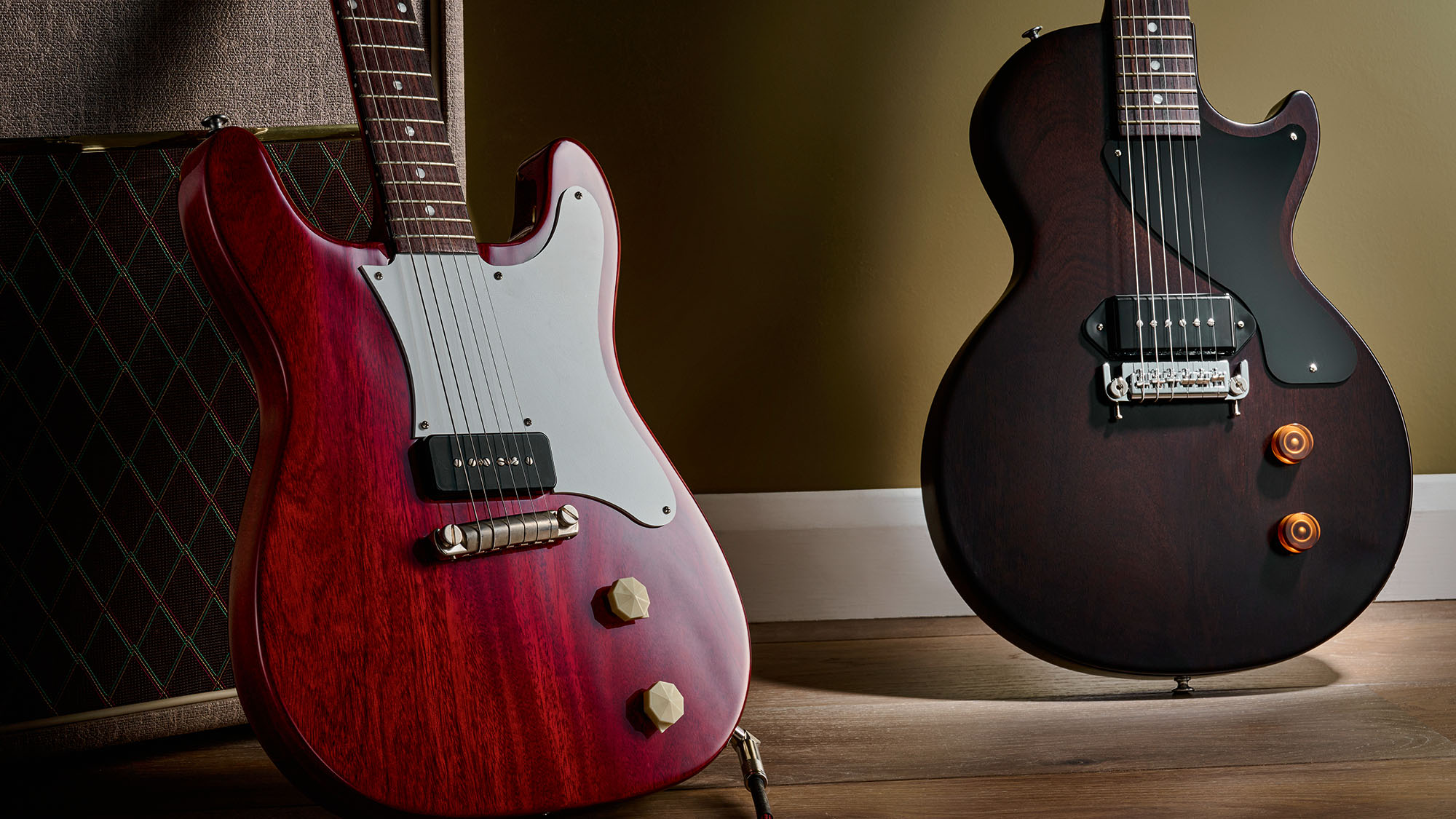Guitar World Verdict
From a sound and, to a certain extent, playability perspective, both of these ‘Juniors’ hit the spot. But it’s at the expense of the finer details that many makers simply wouldn’t allow. That said, for those who need the Gibson logo and embrace the Junior style, Charlie’s model has got something going on: it comes across as a real giggers’ delight, far from precious and with a very strong, full-fat P-90 roar.
Pros
- +
The Gibson is a cleaned-up version of Charlie’s modded 1956 LP Junior.
- +
Plenty of juicy P-90 grind and roar.
- +
Very stage-aimed.
- +
Epiphone has very tidy build with excellent finish.
- +
It's lightweight and very resonant.
- +
Highly valid lighter voicing – a very vibey guitar.
Cons
- -
Finish issues on Starr Junior
- -
‘Unfinished’ pickguards.
- -
Rather square ’board edges.
- -
Vintage frets don’t suit Starr's Junior modded style.
- -
We’d be tempted to rewire the circuit to vintage style.
- -
Epiphone badge looks a little budget.
- -
Coronet has sharp pointed control knobs.
You can trust Guitar World
For a guitar that was specifically created and aimed at beginners, the Gibson Les Paul Junior has been embraced by many professionals since it first saw the light of day in 1954. Gibson had no idea it had created a rock ’n’ roll benchmark that would still provide inspiration for players – and guitar makers – everywhere some 70 years on.
Later in that decade, Gibson changed the Junior’s ‘dress’ with a new double-cutaway version, which certainly has its fans and, as on the ES-335, that extra cutaway gave full access to the fingerboard, as well as increasing the unsupported length of the neck, of course.
It was exactly at this period that the Coronet was born, the first solidbody Epiphone (along with the two-pickup Crestwood) and the first one designed by Gibson since it had purchased the brand in 1957. It was initially called the ‘Moderne Black’, but that name was appropriated for Gibson’s near-mythical modernist design that appeared in 1958 alongside the V and Explorer; the Coronet name goes at least back to a pre-war Epiphone archtop.
Clearly, this was a pretty fertile time for Gibson’s design department. Not only had the Les Paul Standard grown into its classic style, there was the revolutionary ES-335, those modernist models, that double-cut Junior and Special, and now someone had to create new designs under the Epiphone brand.
Perhaps the diligent designers ran out of steam because the Coronet could be seen, outline-wise, as a symmetrical double-cut version of the Fender Telecaster or, more accurately, the single-pickup Esquire.
Gibson Charlie Starr Les Paul Junior
At the starting point of Gibson USA’s models, the standard Tobacco Burst Junior will cost you $1,599/£1,499.
This signature guitar (limited to 250 in each of its two colours) is a tweaked version of that, reflecting the mods Charlie’s 1956 Junior has gone through: there’s the Grover tuners, the six-saddle Leo Quan-style wrapover bridge with locking posts, a chromed metal output jack plate, and an overwound dog-ear P-90. More esoteric alterations are those amber speed knobs without any numbers.

There’s a signature squiggle on the truss rod cover, too, and the guitar comes in what Gibson calls a “historic Les Paul Junior ‘Gator Skin’ hardshell case”, which includes a some case candy in the form of the Charlie’s rather good signature ceramic slide and a ‘Hey Ya’ll’ sticker that replicates the DIY artwork on the back of his original.
The standard 45mm thick slab body with its small edge radius is two-piece centre-joined mahogany, the mismatched grain clearly visible under the translucent satin nitro Dark Walnut finish.
As ever, the neck is also mahogany, glued into the body with the typical Junior lip in the treble cutaway. To style, there’s no fingerboard binding and just simple dot inlays.
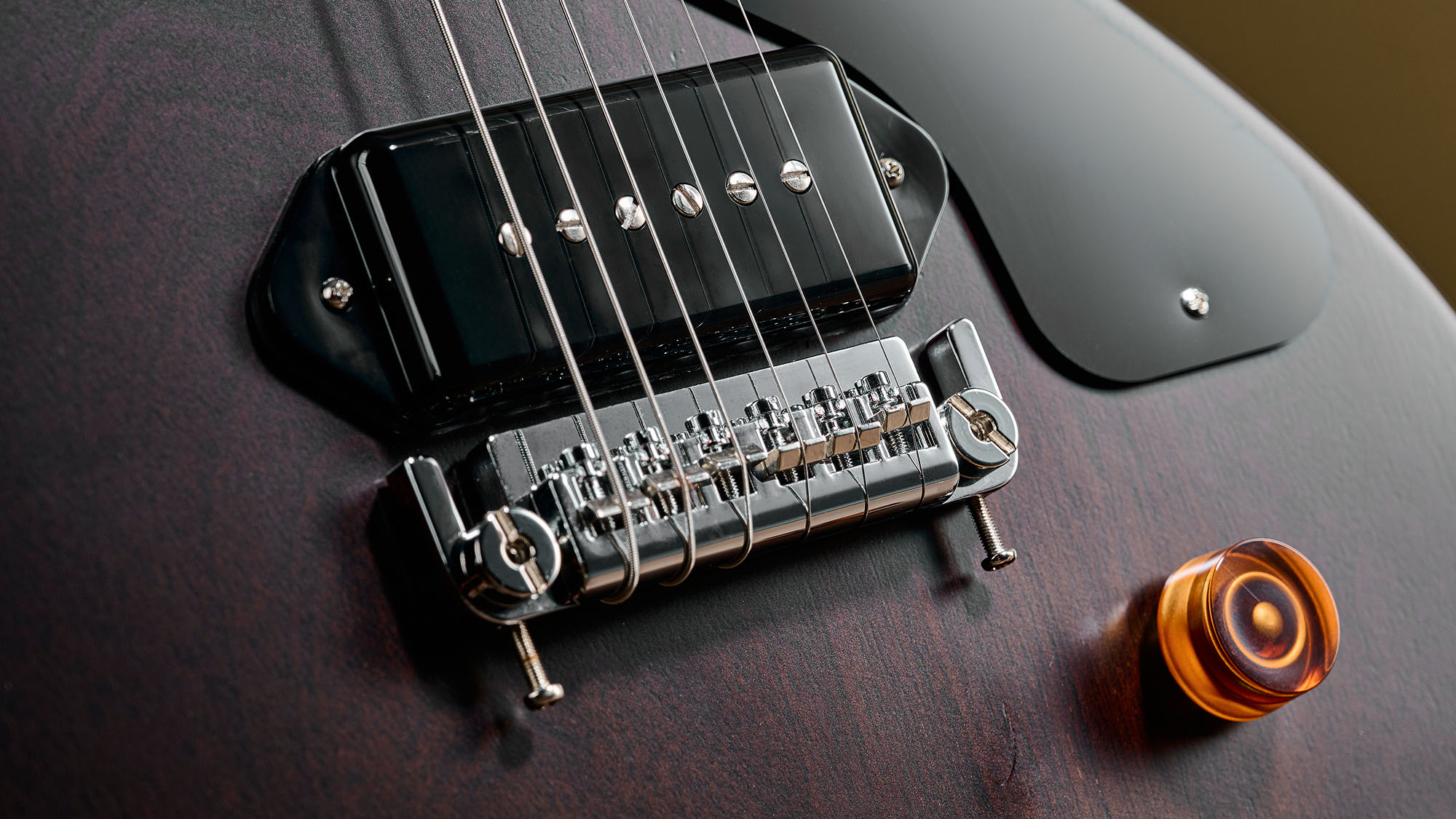
The mounting of the pickup – which has a ‘P90 Dogear OW’ logo on the back – is standard for the dog-ear style. Two lips extend from the ends of the baseplate and rest on the body top (here with a single spacer to raise the height) and it’s all held in place by the screws that also hold the plastic cover in place.
While there are some nice touches, those locking studs for one and the metal output jack plate, the classic black-plastic single-ply pickguard’s edges are left sharp and look – and feel – pretty cheap.
While we’re shouting out the cons, the heel finishing looks a little scrappy, plus there’s an area on the body by the base side of the fingerboard that hasn’t been properly grain-filled.
Epiphone Coronet (USA Collection)
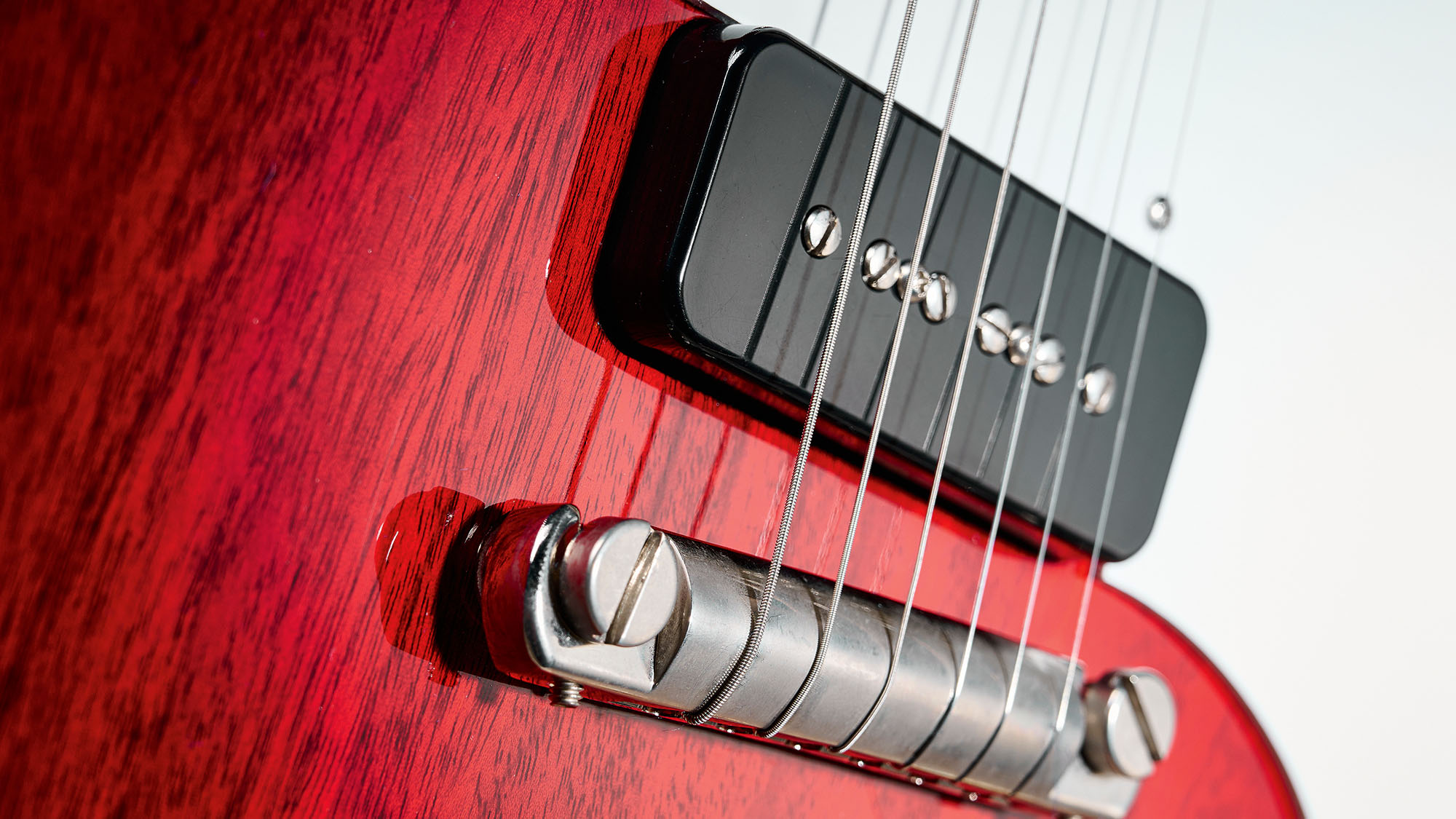
Pulling this new USA-made Coronet from its attractive blue-plush-lined rectangular hard case, it comes across as the more expensive piece. The body is thinner and more SG-like at 34mm, and under the fetching translucent cherry colour it seems more attention has gone into the diagonally grain-matched two-piece centre-joined body. The gloss finish just seems more expensive than Charlie’s oh so utilitarian Junior, too.
Removing the white scratchplate we notice those sharp edges again as well as sharp points on the bass side, and the screws aren’t fully countersunk, which lets the craft down. Nevertheless, you see the neck extends into the body some 58mm, although it’s not full width like the post-’58 double-cut Les Paul Junior, for example.
Like our Junior, here there’s no fingerboard edge binding and you get those same dot inlays, while that ‘bikini’ badge that displays the headstock logo is a rather budget-looking plastic affair.
The tuners are single-unit Kluson style with white plastic buttons but with modern securing nuts on the front, not vintage-style bushings. More vintage is the same Advanced Plating lightweight wrapover bridge that you’ll see on Gibson’s standard Junior – ours looks aged, although that’s not mentioned on the spec sheet.
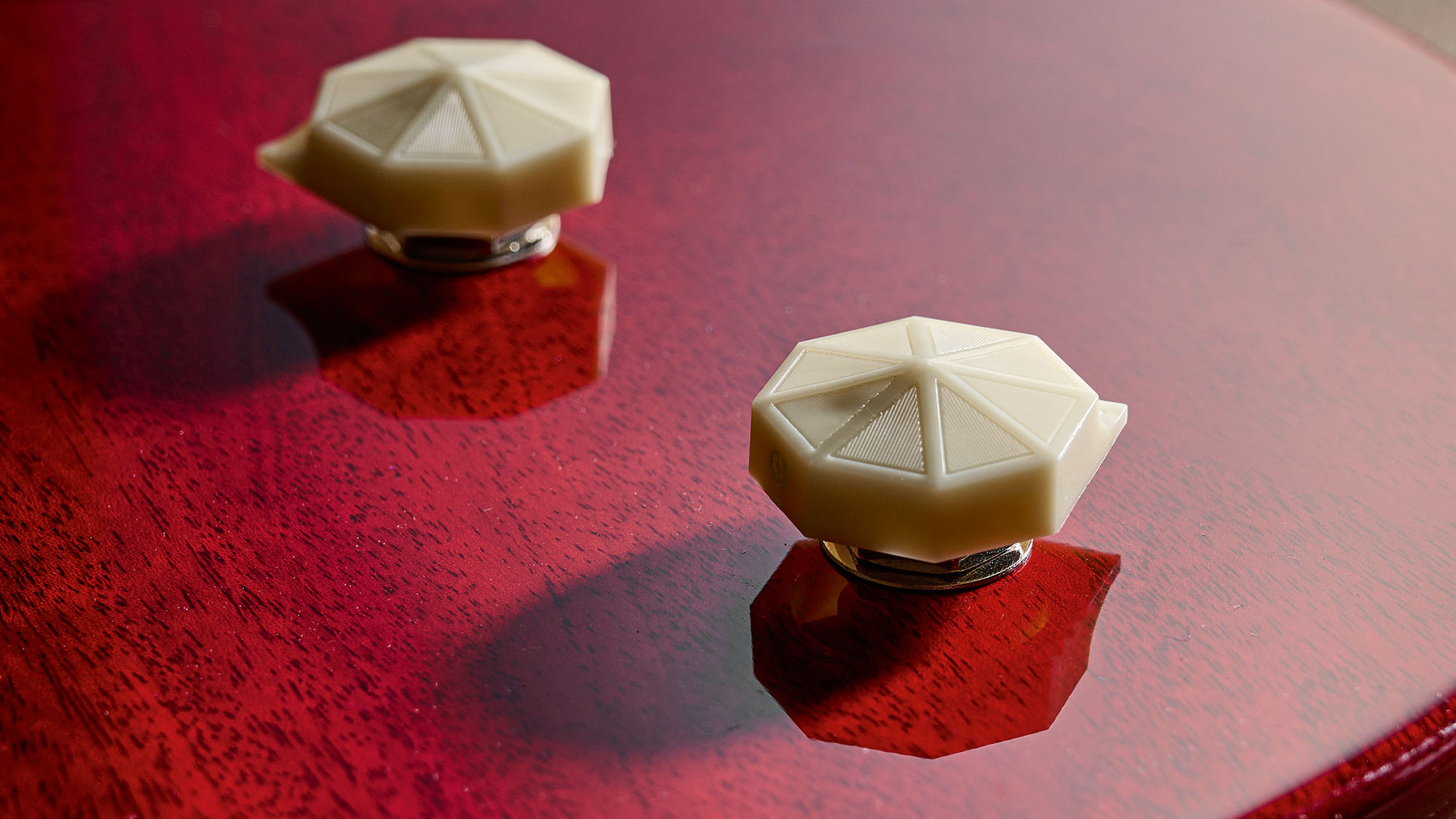
The soapbar P-90 – a ‘Lead P90 soapbar’, according to its rear label – is chosen over the rectangular New York single coil that would have graced the early Coronets. It direct-mounts to the body and is height adjustable.
That said, it seems quite loose and could probably do with firmer supports, and on closer inspection the two fixing ‘screws’ are actually bolts (as used to hold a humbucker into its mounting ring) that thread into a metal baseplate that’s screwed to the body under the pickup. The pickup is suspended with humbucking-like springs… so, direct-mounted to the body? No, not really.
Those funky ‘carousel’ control knobs look pretty cool, but again the pointer extension on each is very sharp. Along with that pickguard, we’d be tempted to smooth and round some of the edges and sharp points here.

Feel & Sounds
At 3.72kg (8.18lb), the Junior isn’t overweight but feels pretty substantial, which can’t be said for the Coronet; at 3.06kg (6.73lb), it feels featherweight in comparison and also a little more delicate.
Strapped on, they do hang slightly differently: the Junior feels very centred; the Coronet feels a little wider and sits a little lower using the same strap thanks to that bass-side horn strap-button position.
There’s little difference in the width of the necks and both have the same 20.8mm depth at the 1st fret. The Junior fills out a bit more by the 12th to 24.2mm; the Coronet is marginally slimmer at 23.5mm. There’s less difference than you might initially think, with both having quite full‑shouldered ‘C’ profiles.

The similarity continues with the relatively small fretwire (approximately 2.3mm wide by 1mm high) and you can’t help thinking a bigger wire on Charlie’s Junior would suit its modded vibe – his own original has apparently been refretted three times since the early ’90s when he bought it. As is, the chosen wire gives both guitars quite a vintage vibe, but the fret height is pretty low.
We expect nicely fettled frets these days and here the work is okay, although the Coronet’s frets do feel a little smoother on both the crowns and the ends. The fingerboard edges are very square on both, too, with no incurve; there’s some light edge rolling on the Junior, less, if any, on the Coronet.
Setup wise, both are pretty good – there’s a slightly sticky D string nut slot on the Junior and the Coronet’s nut grooves are a little high but not excessively so.
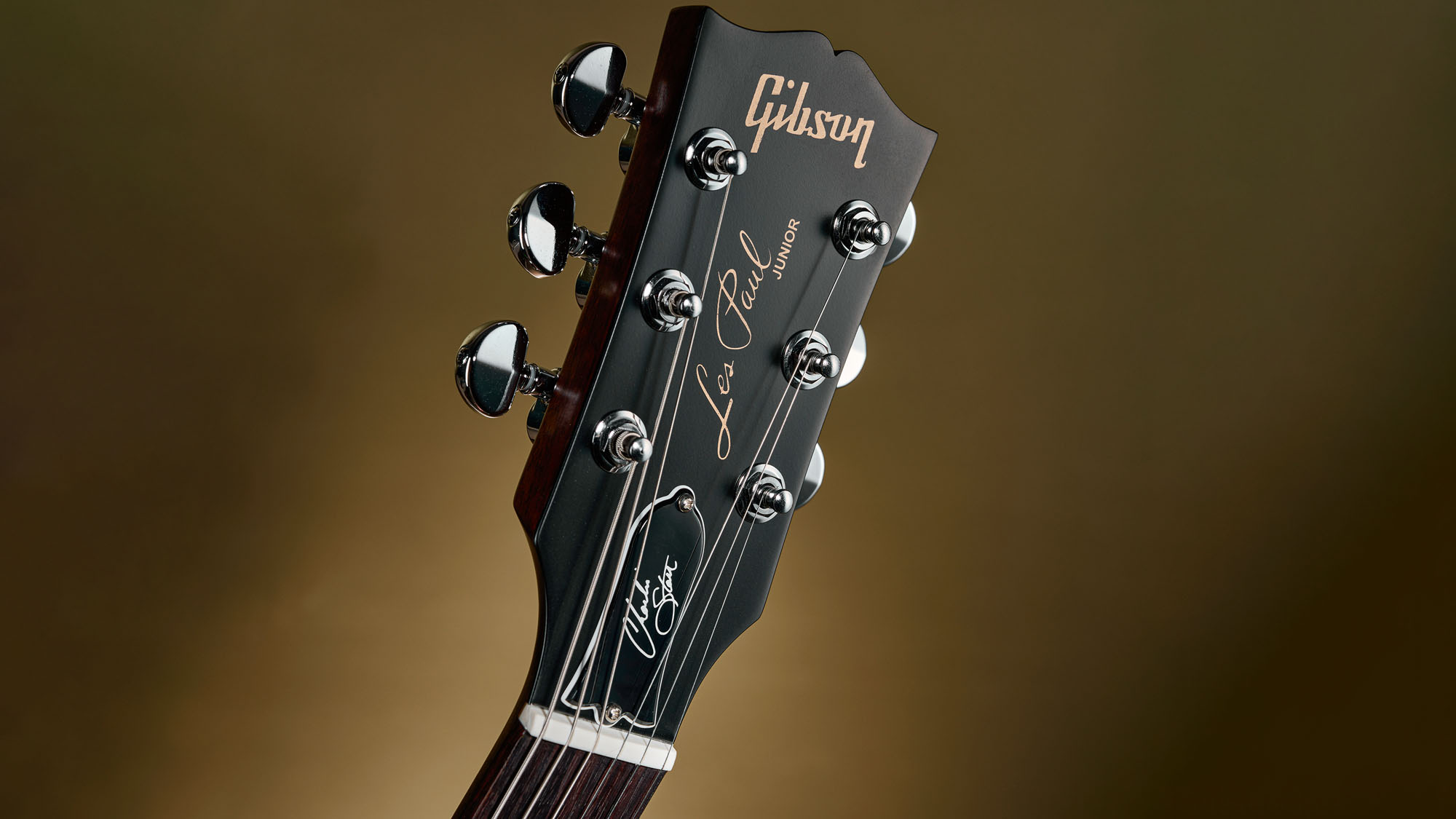
Neither guitar disgraces the single-pickup style and the Charlie Starr comes close to our real ’57 Junior with that almost cocked-wah throaty midrange push. No, it doesn’t quite match the wallop of the real thing – the top string response is a little thinner and brighter – but that archetypal Gibson grind is here in spades.
The Coronet’s different construction and slightly lower-output pickup lightens up that lower midrange grind a tad, but its slightly clearer voice has plenty of appeal. It’s not a million miles away in the heat department, either, with plenty of juicy punch and slightly more clarity, or twang, on the lower strings.
The missing ingredient on both is a more flexible control setup. If you play with everything full up, that’s not a problem
The missing ingredient on both, however, is a more flexible control setup. If you play with everything full up, that’s not a problem.
But whereas the original Junior has considerable contrast and shade from its controls – going from an almost acoustic-like clean response with the volume and tone pulled back to that full roar – both review models are a little more ordinary. That’s a pretty quick DIY fix, though.
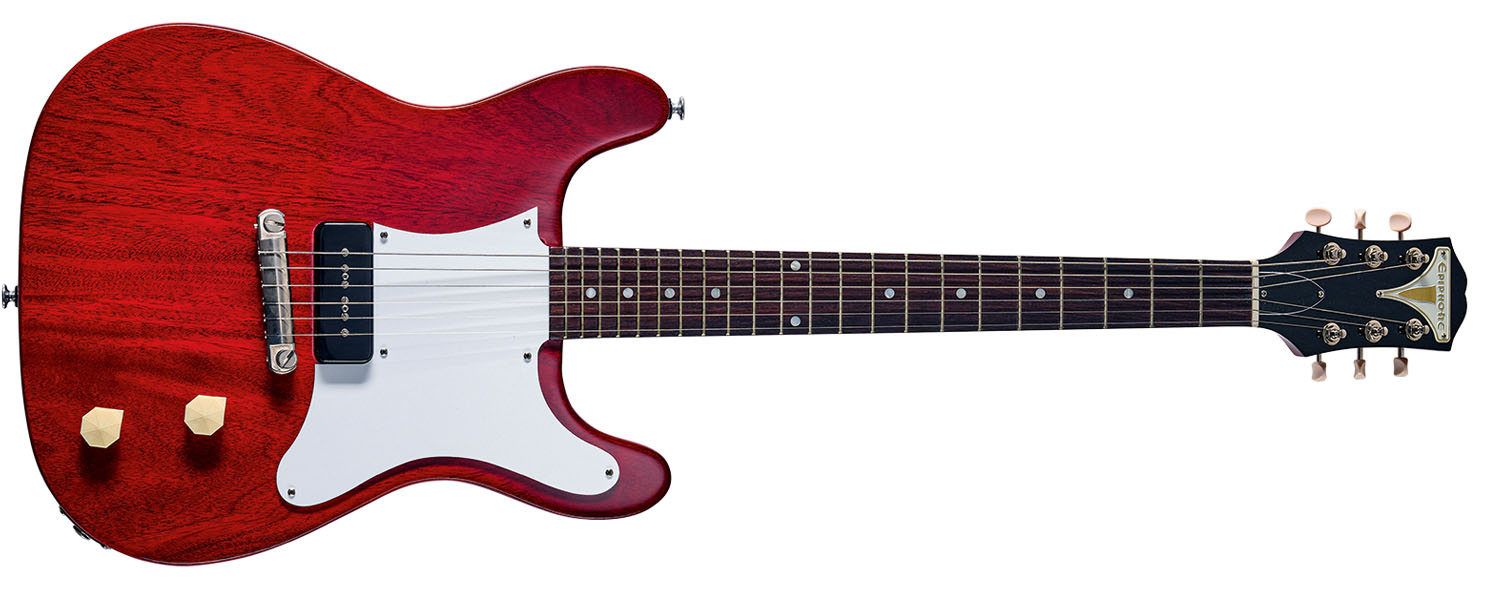
Verdict
From a sound and, to a certain extent, playability perspective, both of these ‘Juniors’ hit the spot. But it’s at the expense of the finer details that many makers simply wouldn’t allow.
That said, for those who need the Gibson logo and embrace the Junior style, Charlie’s model has got something going on: it comes across as a real giggers’ delight, far from precious and with a very strong, full-fat P-90 roar.
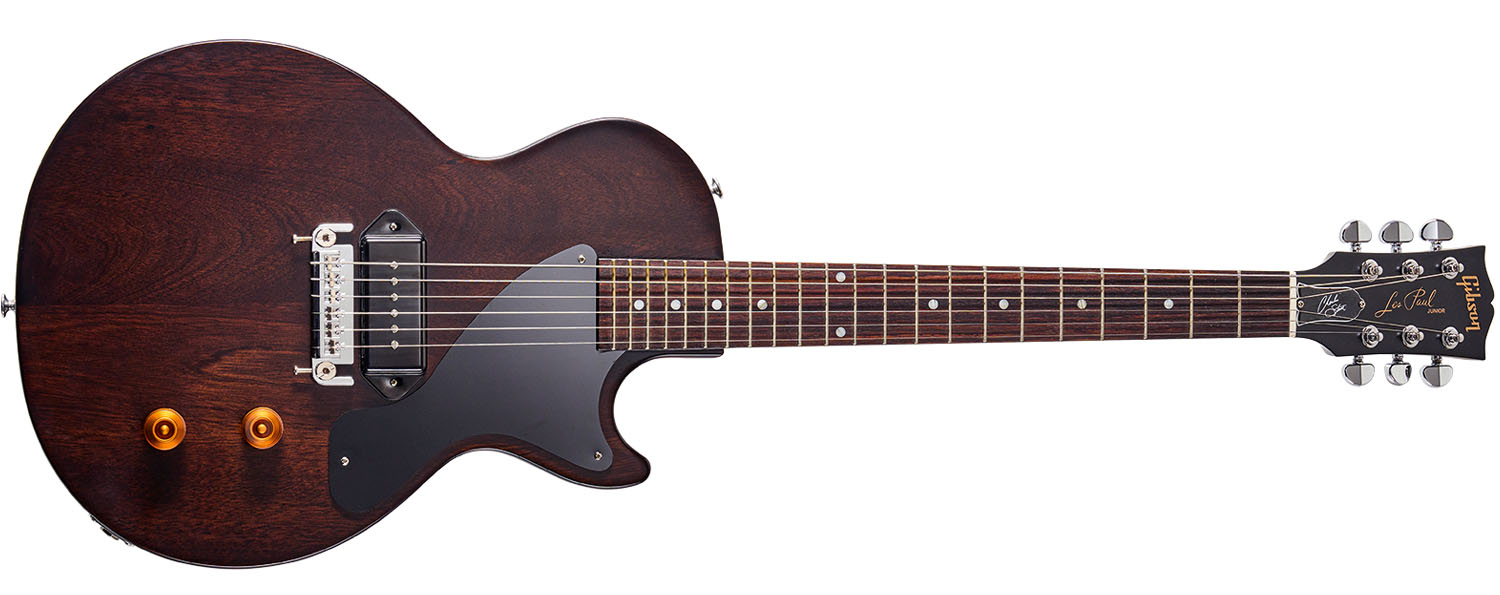
To be fair, the Coronet isn’t far behind and any good boost or overdrive would even up the slightly lower output here. And there’s something very appealing about the slightly less-thick voice, not to mention the resonant lightweight platform and superb finish.
Specs
Gibson Charlie Starr Les Paul Junior
- PRICE: $1,999/£1,769 (inc case)
- ORIGIN: USA
- TYPE: Single-cutaway, single-pickup solidbody
- BODY: 2-piece mahogany
- NECK: 1-piece mahogany, ‘Artist Spec 50s’ profile, glued-in
- SCALE LENGTH: 624mm (24.57”)
- NUT/WIDTH: Graph Tech/43.7mm
- FINGERBOARD: Indian rosewood, acrylic dot inlays, 305mm (12”) radius
- FRETS: 22, medium
- HARDWARE: Adjustable wrapover with locking studs, Grover Rotomatic tuners with kidney buttons – nickel-plating
- STRING SPACING, BRIDGE: 51.5mm
- ELECTRICS: Overwound Dogear P-90, volume and tone controls with numberless speed knobs
- WEIGHT (kg/lb): 3.72/8.18
- LEFT-HANDERS: No
- FINISH: Dark Walnut (as reviewed), ebony – satin nitrocellulose
- CONTACT: Gibson
Epiphone Coronet (USA Collection)
- PRICE: $1,699/£1,599 (inc case)
- ORIGIN: USA
- TYPE: Double-cutaway, single-pickup solidbody
- BODY: 2-piece mahogany
- NECK: 1-piece mahogany, ‘SlimTaper’ profile, glued-in
- SCALE LENGTH: 624mm (24.57”)
- NUT/WIDTH: Graph Tech/43.3mm
- FINGERBOARD: Indian rosewood, acrylic dot inlays, 305mm (12”) radius
- FRETS: 22, medium
- HARDWARE: Wrapover bridge, with locking studs, vintage-style ‘Gibson Deluxe’ tuners with white plastic buttons – nickel-plated
- STRING SPACING, BRIDGE: 50mm
- ELECTRICS: Soapbar P-90, volume and tone controls with ‘carousel’ knobs
- WEIGHT (kg/lb): 3.06/6.73
- LEFT-HANDERS: No
- FINISH: Vintage Cherry (as reviewed), Ebony, TV Yellow (Epiphone.com exclusive only) – gloss nitrocellulose
- CONTACT: Epiphone

Dave Burrluck is one of the world’s most experienced guitar journalists, who started writing back in the '80s for International Musician and Recording World, co-founded The Guitar Magazine and has been the Gear Reviews Editor of Guitarist magazine for the past two decades. Along the way, Dave has been the sole author of The PRS Guitar Book and The Player's Guide to Guitar Maintenance as well as contributing to numerous other books on the electric guitar. Dave is an active gigging and recording musician and still finds time to make, repair and mod guitars, not least for Guitarist’s The Mod Squad.
“It holds its own purely as a playable guitar. It’s really cool for the traveling musician – you can bring it on a flight and it fits beneath the seat”: Why Steve Stevens put his name to a foldable guitar
“Finely tuned instruments with effortless playability and one of the best vibratos there is”: PRS Standard 24 Satin and S2 Standard 24 Satin review
